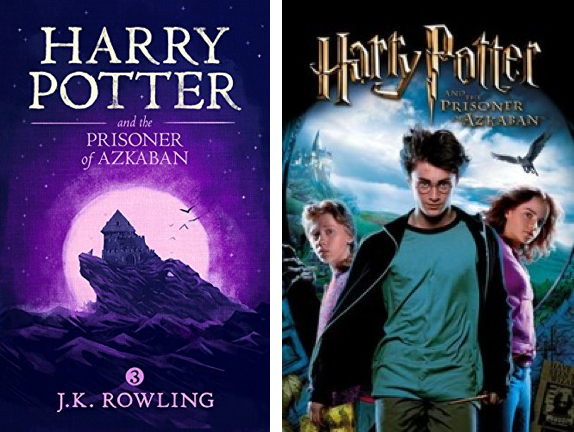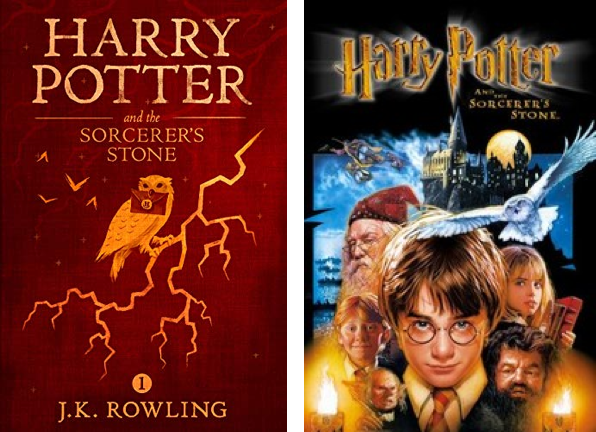
Author JK Rowling wrote the books over seven years in various cafés in Edinburgh as she struggled to make ends meet as a single mum, never dreaming that Harry Potter would become one of the best-known book characters ever written. The first book, Harry Potter and the Philosopher’s Stone ( Harry Potter and the Sorcerer’s Stone in the USA) was published in 1997 and, since then, the seven-book-series has gone on to break all kinds of records, selling over 500 million copies worldwide. The fact that Harry and his friends are casting spells and fighting evil against the backdrop of normal school life, whilst dodging teachers, doing homework and navigating friendships, conflicts and even romance, makes them all the more thrilling. These adventures are just part of the books’ appeal. Harry is pitched into many hair-raising adventures, but the friends’ courage, loyalty and curiosity mean they triumph time and again. However, Harry cannot escape his tragic past: as “the Boy Who Lived” his destiny is tied to that of the evil Lord Voldemort (or “You Know Who”). The boy wizard meets his first real friends on the Hogwart’s Express - serious but kind Hermione Granger and fun and fiery-haired Ron Weasley - and feels like he has come home at last.

Harry enters the magical world via the legendary platform 9 ¾ at King’s Cross station and never looks back. The shocking news that Harry is a wizard is the start of an exciting adventure to meet his destiny. But on Harry’s eleventh birthday, any illusion of normality is rudely shattered when half-giant Rubeus Hagrid bursts into the house to deliver Harry a letter from Hogwart’s School of Witchcraft and Wizardry. After all, his bedroom is the cupboard under the stairs, his cousin Dudley is a moron and his aunt and uncle treat him as an inconvenience. Harry Potter’s life with the “perfectly normal” Dursleys at Number 4 Privet Drive leaves a lot to be desired. Stage Play Script: Harry Potter and the Cursed Child (2016) However, the inconsistencies ended there as the remaining six books all had uniform names.Book 1: Harry Potter and the Philosopher’s Stone (1997)īook 2: Harry Potter and the Chamber of Secrets (1998)īook 3: Harry Potter and the Prisoner of Azkaban (1999)īook 4: Harry Potter and the Goblet of Fire (2000)īook 5: Harry Potter and the Order of the Phoenix (2003)īook 6: Harry Potter and the Half-Blood Prince (2005)īook 7: Harry Potter and the Deathly Hallows (2007) The change in title would also be reflected in the first film when it came out in 2001. To be honest, I wish I hadn't agreed now, but it was my first book, and I was so grateful that anyone was publishing me I wanted to keep them happy. When asked if it bothered her that the name of the book had been changed in the U.S., she wrote that "they changed the first title, but with my consent. Rowling later admitted in a web chat for BBC Red Nose Day in 2001 that she regretted the decision. Eventually, the author suggested Sorcerer's Stone, and that's how the book is known in the U.S.

Errington's biography on Rowling, he wrote that Levine wanted “a title that said ‘magic’ more overtly to American readers." Levine was concerned that Philosopher's Stone would feel "arcane," so one of the proposed alternatives was Harry Potter and the School of Magic, which Rowling shot down. Levine, who headed the Scholastic children's imprint that would publish the book, knew he had a winner on his hands-he just had some reservations about the title. publishing rights for what was then known as Harry Potter and the Philosopher's Stone, forking out a comparably high $105,000 for the privilege.

It dates back to when the rights were sold for the first book: Scholastic Corporation bought the U.S. Rowling's most famous creation is Harry Potter and the Sorcerer's Stone, but pretty much everywhere else on the planet, it's Harry Potter and the Philosopher's Stone.
#HARRY POTTER BOOK 1 NAME SERIES#
One of the ongoing anomalies of the Harry Potter series is the differing title of the first adventure.


 0 kommentar(er)
0 kommentar(er)
